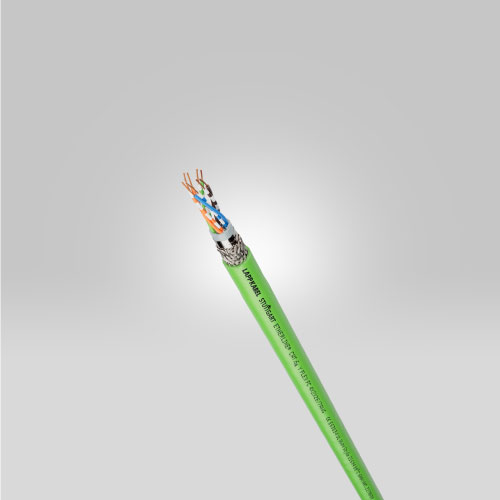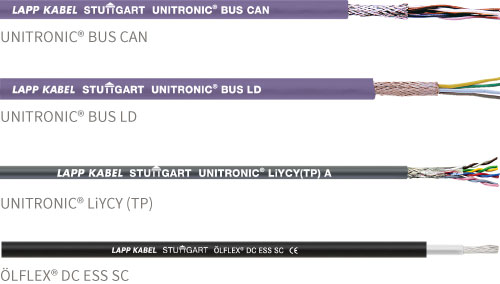
“And what do we do when the sun isn’t shining?” is one of the most frequently asked questions when discussing electricity generation from renewable energy sources – in this case photovoltaics. The transition to renewable energies has turned the secure and timely supply of energy into a new, unprecedented challenge. Energy storage systems (ESS) offer a technological approach to control the fluctuations of supply and demand, increase the reliability of the energy infrastructure and realise efficient solutions for both energy suppliers and consumers.
Therefore, one solution for the continuous usability of energy from renewable sources is to store, for example, surplus solar power generated during the day in an energy storage system. If a household produces electricity via solar panels, a connected ESS can store this in a battery and make it available when needed. If the household owns an electric car, for example, this could also be used to charge it overnight.
Due to climate protection efforts, clean electricity is becoming relevant in all areas of life – both private and industrial. As a result, the demand for electricity storage is also increasing. However, according to experts, large storage capacities need to be built in order to meet this demand in the future and achieve climate targets – according to the International Energy Agency (IEA), 10,000 gigawatt hours will be needed worldwide by 2040. This corresponds to the amount of energy required to supply around 2.86 million households with electricity for a year.
High demands on the connection technology
The number of energy storage systems must therefore be increased accordingly. “Anyone who produces energy storage systems quickly realises that there is a lot to consider – especially when it comes to connection technology,” says John Nijhuis, Project Manager in Benelux and ESS expert at LAPP. LAPP is a leading expert in integrated solutions and branded products in the field of cable and connection technology. A customer segment in the Netherlands produces the basic structures of the storage systems in containers, which they later send to the battery manufacturers for further assembly. Everything has to fit into this basic structure – including the cable installation. But that’s not so easy. “On the one hand, there are different solutions for different usage scenarios,” says John Nijhuis, “so I have to ask myself which cable has the necessary electrical properties for my specific application and which components can I connect with it?” In addition, there are corresponding certification processes that must be carried out correctly, as well as fire protection requirements. “Our customers are experts in storage systems, but not in the complex connection technology behind them,” explains John Nijhuis. That’s why ESS manufacturers are increasingly asking LAPP for support.
This support starts long before the delivery of cables. In order to know what a manufacturer needs for its ESS project, an inventory is required. “In the pre-project phase, we contact various departments of the customer that are relevant to production,” explains Yooshin Kim, LAPP expert for energy storage systems and Sales Representative in Korea, who looks after one of the most important ESS target markets in the APAC region. Generally, the specific requirements are first discussed with the R&D department and the design team, says Yooshin Kim. It must be clarified where components such as the battery or battery management systems will be located in the ESS container. This determines which cables and connection systems are required and – accordingly – which certifications they must have.
First ESS special cable came from Korea
“When the ESS market got rolling, there were simply no suitable connection solutions for these systems,” says Yooshin Kim. So a new cable concept was needed. LAPP observed the developments in energy storage solutions and thought about potential connection solutions. It was clear that suitable cables had to be particularly fire-resistant, as batteries are fundamentally a fire hazard, which is why the cables should not favour the spread of fire. The experts at LAPP in Korea developed the first special cable for energy storage systems – the LAPP ÖLFLEX® DC ESS SC U – to connect the power management system to the battery. It is particularly fire-resistant and also highly flexible, so that it can be adapted to the diverse conditions of the ESS container and easily installed. The cable is now in use at LAPP all over the world.
However, LAPP does not simply supply a special cable, but also focuses on the other needs of its customers. “We know that, in addition to high quality standards, customers need two things from us in particular: Firstly, the most cost-effective solution possible and secondly, fast delivery,” says John Niijhuis. LAPP therefore relies on pre-assembled connection solutions from the LAPP Harnessing Solutions system in order to reduce the effort for customers throughout the entire process. Customers are supplied with ready-made cable assemblies that they only need to install at the designated points in the ESS containers.
Depending on the purpose, additional LAPP cables can be used in a standard ESS system. In addition to the aforementioned LAPP ÖLFLEX® DC ESS SC U, ÖLFLEX® Classic 110, ÖLFLEX® 191 and ÖLFLEX® TRAY 6111 are also used to supply power to the various control systems. UNITRONIC® LiYCY (TP), UNITRONIC® BUS CAN and BUS LD are used as data cables. ETHERLINE® Cat.6A for example is suitable as Ethernet cable.


High-quality components for an efficient complete solution
The combination of products and service – both consulting and pre-assembly – characterises LAPP as a reliable partner. Manufacturers of ESS systems are accompanied and supported by LAPP right from the start of the planning process so that the right cables can be selected for the respective purposes in the ESS container. The LAPP portfolio offers an extensive selection of connection solutions. Manufacturers also save time with customised cable harnesses, which are supplied ready-made by LAPP and only need to be inserted in the right place.
Complete solutions such as those from LAPP not only make the work of battery storage manufacturers easier, but also contribute directly to the success of their solutions. And if storage solutions are successfully produced and used, this is ultimately also a success for the energy transition and the planet. Because with many functioning battery storage systems, the green electricity produced can also be stored and used as required. Even when the sun is not shining, LAPP’s connection solutions help to ensure that clean solar power can be used – for example to charge your own electric car.
